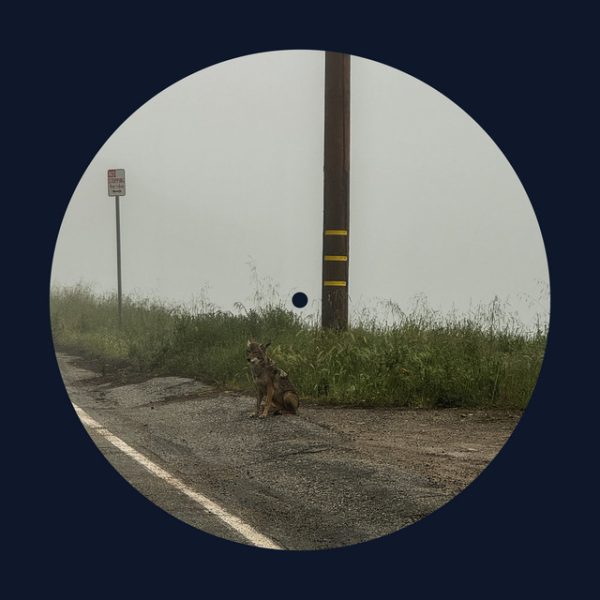Earl Sweatshirt’s “SICK!” Delievers in Lyrics, But Doesn’t Hold Up to Previous Work
The fourth record in Earl Sweatshirt’s small, but highly respected discography, is a bit of a mixed bag of ideas, only some of which end up landing.

February 25, 2022
Earl Sweatshirt, a prominent figure in modern and abstract hip-hop, who got his start in the now-defunct rap group Odd Future, has, up until recently, been continuously one-upping himself ever since he broke onto the scene. Even though his latest 2019 EP FEET OF CLAY received rather mixed reactions, his previous full length project, which was released towards the end of 2018, Some Rap Songs, set a lot of ground for where much of both the mainstream and experimental/underground hip-hop scenes as of now would end up going. The influence of this 2018 record was incredible, as it only took a few years to be cemented as such a noteworthy album, in comparison to many other classic records, such as Kanye West’s The College Dropout, or Madvillain’s (MF DOOM and producer Madlib’s) Madvillainy, which have taken over a decade to fully establish themselves as highlights in their genre. This was especially groundbreaking, as the tracks off of this record were intentionally brief; usually never reaching anywhere over two minutes. Yet, Earl has continued to, especially on his latest projects, successfully discuss his depressive emotions and tendencies through songs that largely depend on the context of each other to create a full, and incredibly direct experience with his lyrics.
So, for such a long amount of time away from creating full releases, it came as a surprise when Earl announced a new record, called SICK!, which would be released after his last, 2018 LP. Considering the lengths that that record went to, many, including myself, were left wondering what direction this record would be taking. Not only did Earl leave things with an incredibly dark atmosphere, but given the amount of time between the two projects, and the distance that record went in terms of its reach and status, I was left completely clueless where Earl would take this new release. But, after listening, the end result seemed to be a mixed bag when it comes to its production and style, but partnered with even more introspective lyrics and genuinely good sound design, which patch up a lot of the holes this record would have otherwise, largely due to the flow of the tracks.
Though many may feel that, in most cases, the way the tracks transition from each other and the lengths of tracks aren’t a major issue when it comes to full-length albums, SICK! serves as a rare exception. Similar to his last project, many of the tracks here only last just over a minute. This short length wasn’t much of an issue on that last record due to the fact that they all served to create a single, cohesive theme throughout the entire record. However, SICK! is, intentionally so, much more disjointed than much of his previous work. Though I don’t believe having a more broken up sounding tracklist is exactly out of Earl’s wheelhouse, when it is combined with over half of the tracks not reaching a standard length, the end result becomes tracks that, when not paired well with other songs, come off as half-baked.
Despite this, though, that’s not to say some tracks pull off their short length to their advantage. For example, the opening track, “Old Friend,” serves as the perfect tonesetter for the record. It uses atmospheric, distorted synth arpeggiators and a dark bass to set an incredibly eerie tone. Lyrically, the song is also a perfect opener, as it directly updates listeners on his mental state, also referring to other events, including the pandemic, that have happened since Some Rap Songs that have had an impact on him. The short length to this track is able to, as was done with his last efforts, establish emotional themes almost immediately, leaving a lasting impression without any need for it to continue on. It’s able to fully make its point before it transitions into the much faster paced track, “2010.”
This song, the second on the record, despite its fast pace and catchy beat, goes into even greater detail on the subjects being discussed on “Old Friend.” In fact, some of the most intense lines appear on this track when it comes to the subject; “Foot shook ground when I stepped on it, I didn’t look back when I broke soil, cause every time I did, it would hurt more,” which is a line I interpret to be a direct reference to his emotions on looking back at his previous work. Despite its success, he doesn’t want to reflect on it, because that inherently brings back memories of the painful events that inspired those projects in the first place.
Instrumentally, too, though, “2010” is a major highlight. It is the first of many instances where the production, in this case done by Black Noi$e, though with other tracks being done by artists like The Alchemist, and even more, take on a highly futuristic sound, with a smooth flow that is incredibly easy to get into. For example, this is also done on what is my favorite track here, “Vision.” This song in particular uses hypnotic piano progressions, which end up almost drowned out by heavy bass and incredibly well-placed drums. All of these elements combine perfectly to compliment a strange, almost nasally flow on the intro from Zelooperz, who, as is the same with Earl, gives a melodic, almost spoken word approach to their delivery.
“Vision” also doesn’t serve as the only track where this kind of delivery is given on the project. For example, the title track, which precedes it, starts off with this delivery in a hard to make out conversation, which seamlessly flows into a verse once the heavy, driving beat eventually kicks in.
Unfortunately, though, despite how great many of these first four tracks are, the record does have a noticeable drop in quality, with what degree to which you feel this is varying depending on how much you value production and instrumentals in comparison to lyricism. If you put a much higher priority on, as I stated before, the instrumental and production aspect of these songs, you’ll likely find a lot less enjoyment out of these tracks than someone else would. Many of the tracks on this section suffer greatly from their length, either because they don’t have enough time to evolve in sound, or they have enough time, but don’t take advantage of it.
The most egregious example of this issue comes into play with the track “Lobby (int),” which, in the context of the length of many of the other songs, isn’t much of an interlude. Sure, the track is just over a minute, but half of the other tracks are just 30 or so seconds over that mark. Additionally, the record so far has used very unorthodox vocal deliveries and production styles, which are intentionally meant to sound weird and off-putting (again, I bring up the delivery on tracks like “Sick!” and “Vision), only in this case the awkward production style is in no way complimentary to the track or album experience as a whole. It comes off as a weird placement in the record, and at the end of the day, feels incredibly half-baked without much in the way of positive contributions to show for it.
Though not as bad, the exact opposite issue is seen on the track “Tabula Rasa.” The song loops this piano-heavy, jazz groove to make up the beat of the track, but it genuinely doesn’t change at all for a runtime of over four minutes. It sounds sweet, sure, and the feature from the collective Armand Hammer suits the instrumental well, but by that same token, their space on the track barely gives Earl enough room to breathe at only one verse at the end of the track. Plus, the jazz sample only holds up for a few moments before you’ve essentially heard everything the track has to offer in the way of production.
These jazz influences do show up better in other tracks, however, with songs like “Lye” and the closing “FIre in the Hole” largely being sweet, smooth sounding tracks with a great flow to compliment. Though these tracks make use more of horns and guitar in the instrumental, rather than piano, I don’t think that that’s entirely the problem here, since “Tabula Rasa” still managed to maintain this level of sound quality. Instead, the main thing that is here, which was missing on “Tabula Rasa,” seems to be a stronger unique take on these jazz ideas that is somewhat unique to Earl. Take the opening to the song “Lye,” for example, where you get a fade out from “Tabula Rasa” into a heavily muffled version of the beat that’s about to play. With Earl going “yep, yep, yep, yep!” over the instrumental, it eventually crescendos into the rest of the track. That intro, even if it is somewhat predictable in the direction it goes, proves to be way more interesting than just starting and continuing to loop a groove.
Going back to more positives around the record, though, is that Earl knows his way around the atmosphere of a project. Take the example I gave before with the closing track – which uses a guitar that could be mistaken for something an indie band like Tame Impala might use on one of their tracks. The sound of this song, when combined with a beat that oddly fades and distorts in and out as it progresses, serves as a fantastic summary to the sound of the record so far. Or, take a song like “Titanic,” who’s stuttering drums sound oddly placed until given the context of Earl’s flow, with the end result sounding like something that wouldn’t be out of place on a JPEGMAFIA or early Tyler, the Creator record.
Overall, SICK! Is somewhat of a mixed bag, especially in the context of the strength of some of Earl’s previous work. It seems as though his desire to make each track feel more separated out and distanced from each other didn’t work with the same format that he was used to working in, and the end result is a series of tracks that, at best, are really good additions to any hip-hop fan’s playlist, but, at worst, ideas that only feel incomplete and still in a state that doesn’t feel polished. In spite of this, Earl does continue to deliver lyrically some powerful messages that reflect on his past, which are worth hearing out for any fan of the artist. Plus, with some good features, SICK! pulls through as a mostly solid abstract hip-hop record, with a few swings-and-misses throughout.



